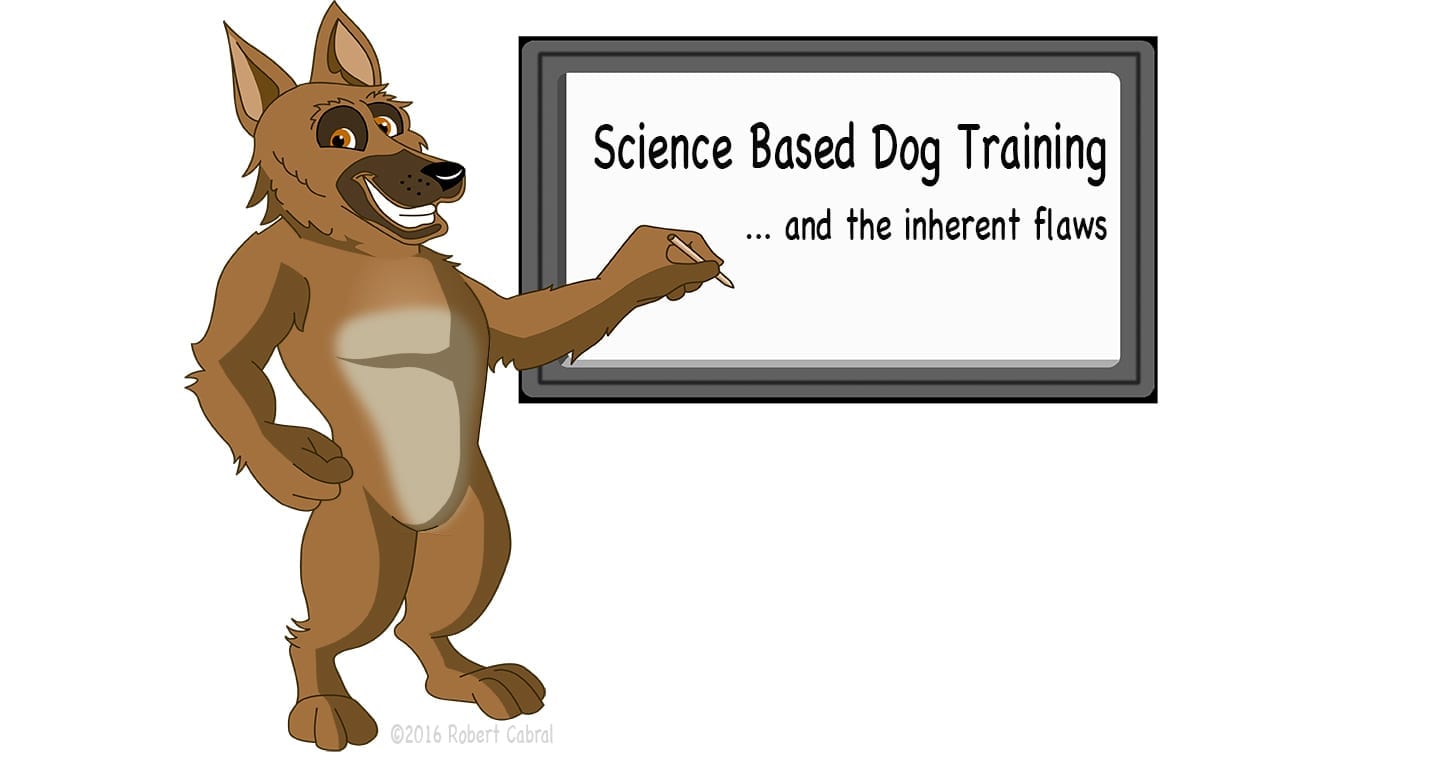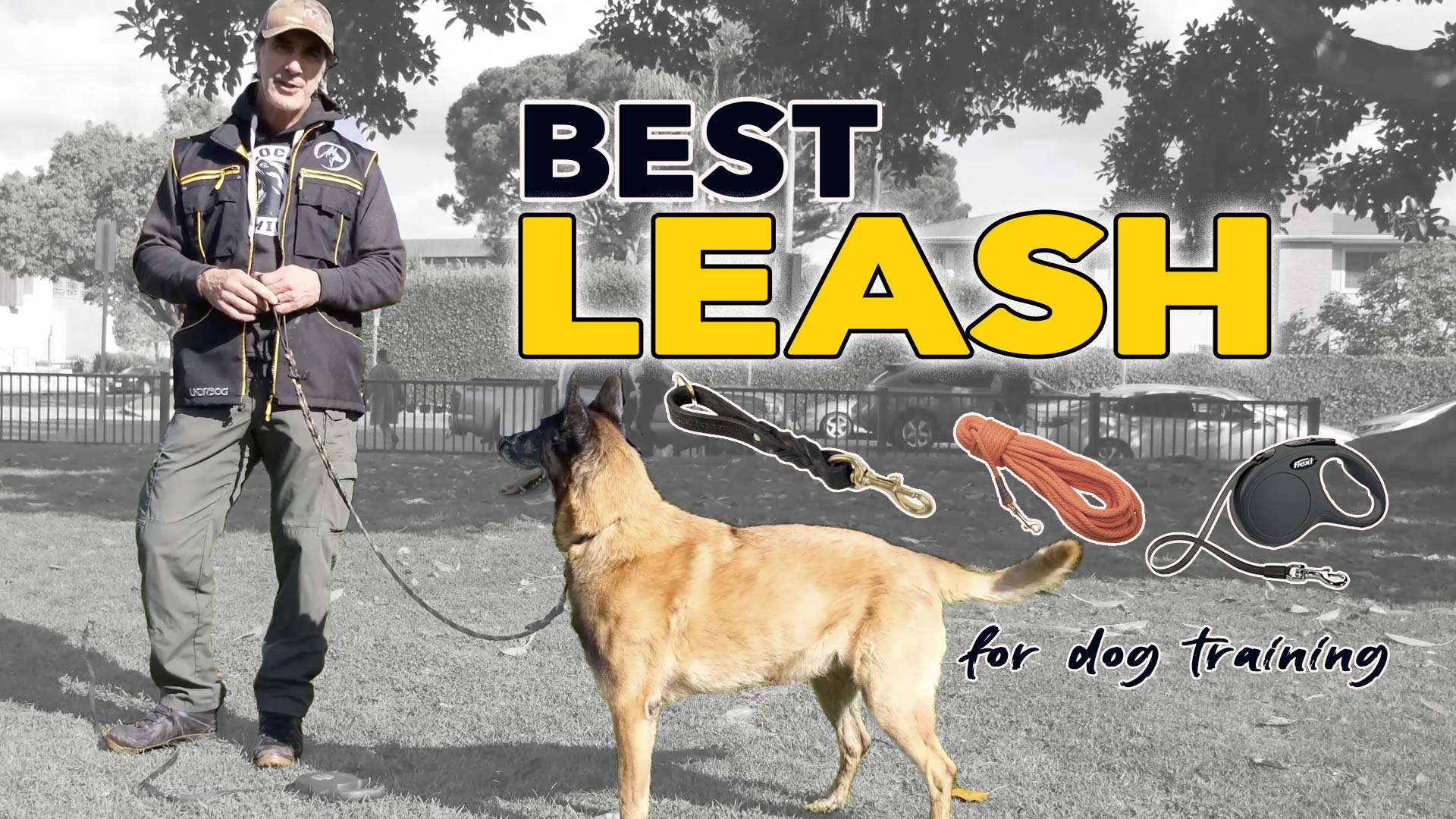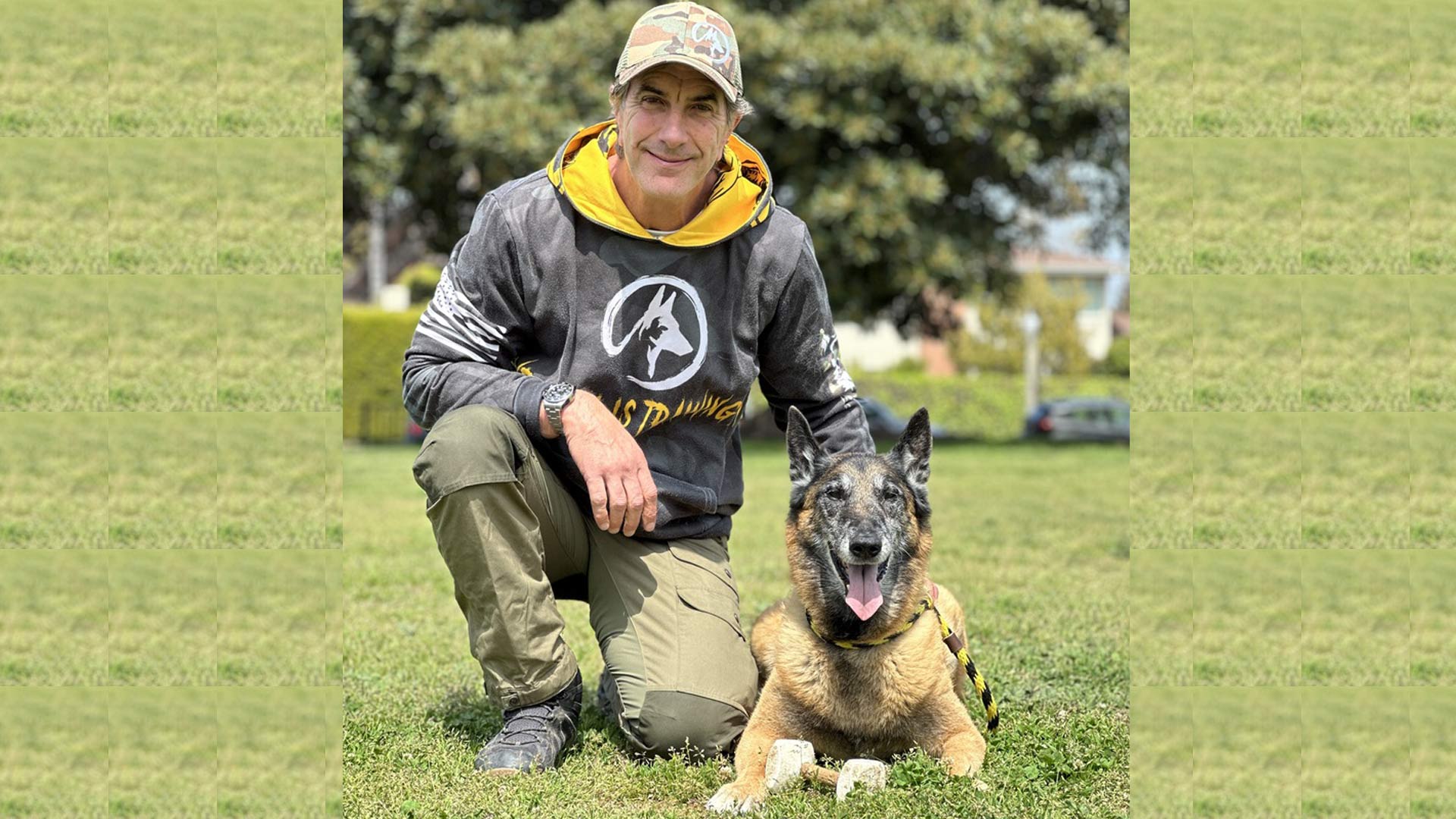Every time I hear someone talking about the “science based dog training” I get a little perplexed. What these people really are saying is “positive only dog training,” since that is what they call their science. And, before I delve into that aspect, I’d like to draw a correlation between something from my past.
I studied and taught traditional martial arts for many years, in fact I use much of the eastern philosophy in my work with dogs including Zen and the philosophy of the martial arts. There are two ways to describe the martial arts in Japanese:
- DO (as in Budo) and Jutsu (as in BuJutsu). DO (pronounced “dough” or doe) translates as Way or Path, it is considered the Budo, the way of the warrior. It is also commonly known in Chinese as Tao (pronounced Dao). But remember even a road or a way has many options and/or offshoots.
- Jutsu ( as in BuJutsu) This is considered the Martial Art. Jutsu is translated as art, which becomes more interpretive. So even though these two words are very different at their core, they both still allow for interpretations of the “way” in which we approach the martial way.
See: online dog training
As I said, I bring much of my experiences and methods of Budo to my dog training and draw on the creative approach (the Jutsu) to the different dogs I work with. There are as many different dogs and personalities as there are people, and working with them needs to be free to interpretation and style. Although I will state openly that I am vehemently opposed to abuse in any way, I do not believe that proper corrections are abuse. Contrarily, I do believe that frustration in training borders on abuse. I have watched many “science based” dog trainers use puzzles to see what a dog would do and how a dog would respond, wait for dogs to filter through countless mistakes in search of solutions. I find this frustration equal to (if not worse than) correcting a dog with a pinch collar or electric stimulation. Remember, even BF Skinner, the hero to the “scientific” dog training movement used a Skinner Box which involves shocking animals during his experiments. It should be ironic though that BF Skinner nor Karen Pryor ever showed great success in dog training. Much of the science of dog training gets lost in the theories and doesn’t approach true issues or solutions.
I am not against positive dog training in any way, in fact most of my training involves positive / reward training, corrections are rare and are focused to guide a dog into compliance and block bad behaviors. This is particularly true with pet dogs, basic training, and dogs that have no real issues. There are however instances in which dog owners and trainers must be free to use aversives in training, otherwise sacrificing the dog. Limiting dog training to only “one way” such as positive only is as ridiculous as limiting it to only “compulsion” or punishment. If someone is attacking an abusive trainer or one that uses too much pressure on a dog, I’ll jump on the wagon and lead the charge, but using aversives properly including pinch collars or electronic collars is far from abusive. In fact, dogs often respond easier and solve problems faster when guided through the use of these methods. A dog left to their own devices will generally make costly mistakes, like running into the street, killing the cat, knocking down the baby and barking incessantly. These mistakes can cost them their lives or lead them to be discarded at a shelter (which may then cost them their lives as well).
Remember dog communicate primarily through energy and body-language. Talking to them and giving commands they don’t understand increases stress levels in dogs. Using leash pressure as well as luring and shaping with rewards teaches a dog through a method they instinctually understand.
Whenever I post something about this the first thing that comes up are pictures of dogs with pinch collars embedded in their necks. This hyper-hysteria is misplaced because it has nothing to do with the proper use of the tool, rather its abuse. This would be akin to showing a starving dog and linking that to a dog trainer who withholds a meal in order to work a dog with low food drive.
Training a dog should always be approached through the most humane methods possible. Food, toys, rewards and the like are the best place to start. Building a relationship i.e. pack drive is critical to getting dogs to understand what we expect and what we won’t accept. Sadly though, as soon as someone sees a correction the “abuse” card is played and everything is destroyed. Proper physical correction on a dog should be seen as nothing worse than withholding food, toys or praise.
The Predator Issue: Since so many people cite the success of operant conditioning or positive-only training on whales, porpoises and chickens, we must remember that these animals are not along the predator / prey scheme as dogs are. Yes, dolphins and whales are predators in that they kill and eat other fish, but they are not predators that hunt, chase and kill their meals. They simply swim with an open mouth and feed. A dog’s innate drive to chase (prey drive) is hard wired into them and, even though domesticated from the wolf, it still is as prominent now as it was. Dogs play in prey mode. The chase game is a game of running after something to catch it, which if left unchecked can cause otherwise good dogs to bite. Take for example a dog that is not conditioned to bicycles, kids running, skateboards, little dogs running, cats, etc. – the dog’s first instinct is fight or flight. If they give chase they know no other option than to bite when they get to the object. These are the times where we can effectively use an aversive to curb some of that drive. This can be done by blocking prey drive and/or building pack drive.
Balancing the field between positive-only and compulsion-based training is the key answer to this issue. Most trainers who are successful with pet dogs as well as rehabilitation and competitive dogs use a “balanced training approach,” and to me this is the only true way to train a dog. Just like there must be a yin and a yang, a black and a white, a good and a bad, there must be a system of reward and consequence for a dog. If a dog doesn’t hunt, he doesn’t eat! This is hardwired into almost every dog. I’ll agree that many dogs don’t need aversives because their breeding has created a living stuffed dog more than the true predator that has evolved into a dog, but the option should be available to correct a dog if necessary without the risk of vehement criticism from people who may not agree or worse yet, those who may not know better.
I’ve seen many positive only trainers who are very good at what they do, and as I have stated, rewards MUST be present in any method of training –be it with people or animals. These rewards can be a treat, a toy or praise. The dog must be rewarded for accomplishing his task in order to “mark” that given behavior. This sets the imprint in the dog’s mind. However, there are cases in which dogs respond better, faster and more clear-headed with corrections rather than lingering frustration. If we don’t want to use the proper guidance to block undesired behaviors we are truly setting dogs up for failure.
The never say NO principle is truly one of the most damaging things I have seen in my lifetime. I remember one of the things that led me to stop teaching martial arts. It was the day of kyu testing (belt testing) and a boy’s mom said to me, “Billy is gonna get his green-belt today.” I said, “Oh, you mean Billy is testing for his green-belt today.” She retorted, “Well, nobody fails, everybody wins.” I asked her if she ever played the lottery. Where did this crap come from? “No one fails?” What an absolute set up for failure this philosophy has become.
If we don’t learn from experiencing failure, failure will destroy us.
It is the lessons that I learned through my failures that made me the person I am today, the person that strives for success and trudges through adversity.
If failure and success are one in the same, where is the motivation?
So when we look at “the science of dog training” I ask myself, where is this “science?” It sounds impressive, but lacks proof and substance. Yes, it works on some dogs, but is science to be limited to only one approach – one way? There is no room for a science that is based on a single, myopic, limited way. Dog training must remain an art, interpretive, expressive and open to serve each dog that needs it. That would be the truest WAY.
Several years ago I was teaching at a shelter when a dog was brought to me. The employee said this dog couldn’t be taught to do anything, not lie down, not sit and not come. The previous trainer had given up on him. I asked what methods the trainer used. I was told a pinch collar. I took the dog on a slip lead and used some treats to shape and lure the behavior. Within 10 minutes the dog was doing all of he commands perfectly. Here is an instance in which someone started out improperly and never looked at other options. This can happen from both sides of the spectrum. Sometimes positive only people don’t progress to using a correction when necessary and sometimes other trainers don’t want to start or progress to using treats to lure and shape a behavior.
If you’re approach isn’t open, then you’re approach is flawed.
I’ve said it on so many occasions that those who criticize are less often the people doing, rather they are the armchair quarterbacks. If you can train every dog with positive only methods, my hat is off to you, and all dogs should be given the chance to start with purely positive training. However, often when it comes time to proof a command, such as a STAY under distractions, some form of compulsion will be necessary.
Our shelters are filled with the victims of negligence and myopic thinking. I applaud any trainer who cares and loves the dogs they train and those who stand up against those that are abusing dogs – I’m with you. But I am deeply concerned about those dogs that slip through the cracks when one single method of training doesn’t work, be that positive only or compulsion only. Let’s keep the options open, let’s prosecute people who are truly abusing dogs either with physical punishment, but also those that abuse them by not being able to give the structure they want and those that give up on them when one method doesn’t work.
What we do is for the betterment of the life of dogs; lets not lose sight of that!






